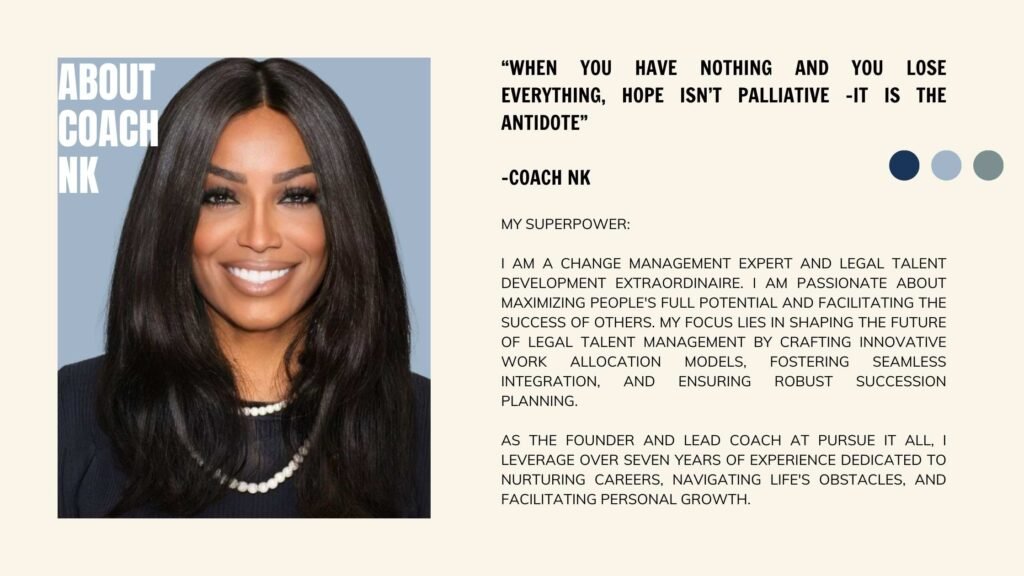Have you ever felt that your career is moving forward, but something feels off? You’ve hit the milestones, received promotions, maybe even a pay raise—but you still feel unfulfilled. You’re not alone. Many successful professionals experience this disconnect, often because their career isn’t aligned with their deeper sense of purpose.
Purpose isn’t just about passion or what you’re good at; it’s about the values and impact that truly drive you. When your career and purpose aren’t in sync, even success can feel hollow. In this article, we will explore three key signs that your career isn’t aligning with your purpose and how you can start changing course for long-term fulfillment.
Sign 1: Chronic Dissatisfaction Despite Success
You’ve Achieved, But You’re Unhappy
From the outside, it seems like you have it all—recognition, leadership, and tangible success. But internally, something’s missing. This feeling of dissatisfaction can appear even when you’re ticking all the right boxes. If you find yourself feeling constantly drained or indifferent about your job, it may be a signal that your work isn’t aligned with your deeper values or sense of purpose.
Why This Happens
Many professionals follow a path of expected achievement—climbing the corporate ladder, hitting performance targets, and securing prestigious roles. However, if these goals aren’t rooted in personal purpose, they can lead to burnout and a growing sense of disconnect. The work you’re doing may no longer feel meaningful, and this misalignment can make even success feel unsatisfying.
How to Recognize It
- Do you feel a sense of dread on Sunday nights, knowing the workweek is coming?
- Are you questioning the why behind what you do, or feeling like your role is pointless?
- Do accomplishments that used to excite you now feel like obligations?
If you find yourself nodding to these questions, your career might be lacking alignment with your core purpose.
Sign 2: Lack of Motivation and Engagement
Work Feels Like a Chore
Remember the early days of your career when you were excited to take on new projects, face challenges, and innovate? If that fire has dimmed and you are now just going through the motions, it’s a very clear indicator that something is off. When your career is disconnected from your purpose, staying engaged becomes a struggle, and tasks that used to energize you now feel monotonous and draining.
Why This Happens
Purpose is a natural motivator. When you’re doing work that resonates with your values and desires, you’re not only more productive but also more passionate about your role. On the other hand, when your career lacks purpose, it can feel like you’re just fulfilling obligations. Over time, this lack of engagement can lead to decreased productivity and feelings of stagnation.
How to Recognize It
- Do you find yourself procrastinating more often or feeling uninspired by projects?
- Are you simply “punching the clock” and counting down the hours?
- Have you lost interest in seeking professional growth or taking on new challenges?
This decline in motivation isn’t about laziness—it’s about a lack of purpose-driven work. When your role is aligned with what you truly value, engagement follows naturally.
Sign 3: Emotional Burnout Without Clear Cause
Burnout Without Overwork
Many professionals associate burnout with long hours and high stress, but emotional burnout can happen even when you aren’t overworked. If you feel emotionally exhausted or disconnected from your career without a clear reason, it may be because your work no longer aligns with who you are. You may feel drained because the tasks you’re performing don’t match your deeper goals or vision.
Why This Happens
Burnout often stems from spending too much energy on things that don’t bring joy or fulfillment. When your career lacks purpose, you expend emotional energy trying to stay motivated, compensating for the lack of alignment. Over time, this constant disconnect wears you down, leading to emotional burnout—even if your workload isn’t unusually heavy.
How to Recognize It
- Do you feel emotionally detached or cynical about your work, despite once being passionate?
- Are you experiencing physical fatigue or stress without an increase in job demands?
- Do you feel like you’re giving too much to something that doesn’t give back?
This kind of burnout often results from being out of touch with your purpose. It signals that your energy is being spent in ways that don’t resonate with your deeper values, leaving you emotionally drained.
How to Realign Your Career with Your Purpose
If any of these signs sound familiar, you’re likely facing a disconnect between your career and your purpose. Realigning your career can reignite motivation, enhance fulfillment, and achieve sustainable long-term success. Here’s how to start:
- Reflect on What Energizes You
Remember the moments in your career when you felt most energized, passionate, or fulfilled. What were you doing? Who were you impacting? Understanding what energizes you can provide insights into your purpose. - Identify Your Core Values
What values are non-negotiable in your life and work? whether it’s creativity, integrity, collaboration, or making an impact., Knowing your values will help you identify your purpose and realign your career with it, - Redefine Your Role
Once you’ve identified your purpose, look at your current role through a new lens. Can you make small shifts in your responsibilities or approach to better align with your purpose? If not, it might be time to explore new opportunities.
Take the First Step to Career Fulfillment
Your career should reflect your values and purpose, not just a series of achievements. When it aligns with your purpose, work becomes fulfilling, success feels meaningful, and long-term satisfaction is within reach.
Find Your Purpose
If you’re ready to discover how to align your career with your purpose, take our What’s Holding You Back? A quiz to identify where you may be stuck and get personalized insights to help you realign.
Book a Free Consultation
Feeling ready to explore your path to long-term fulfillment? Schedule a complimentary consultation with Pursue It All and start making the shift to a purpose-driven career today.







